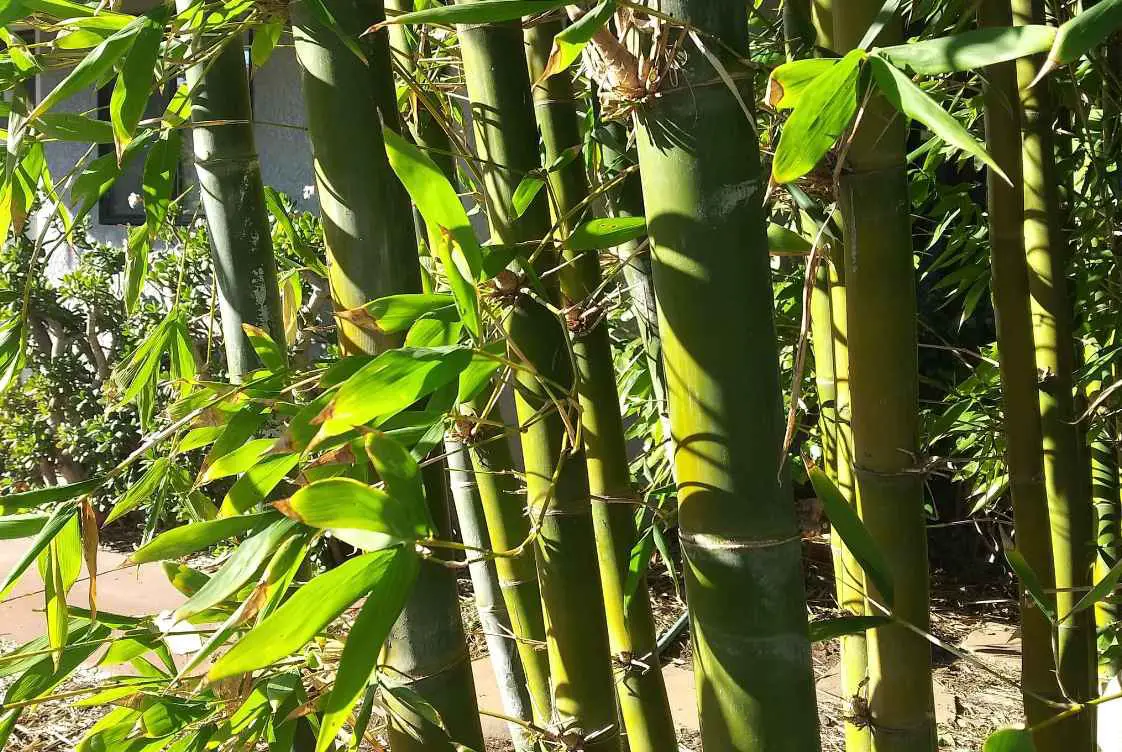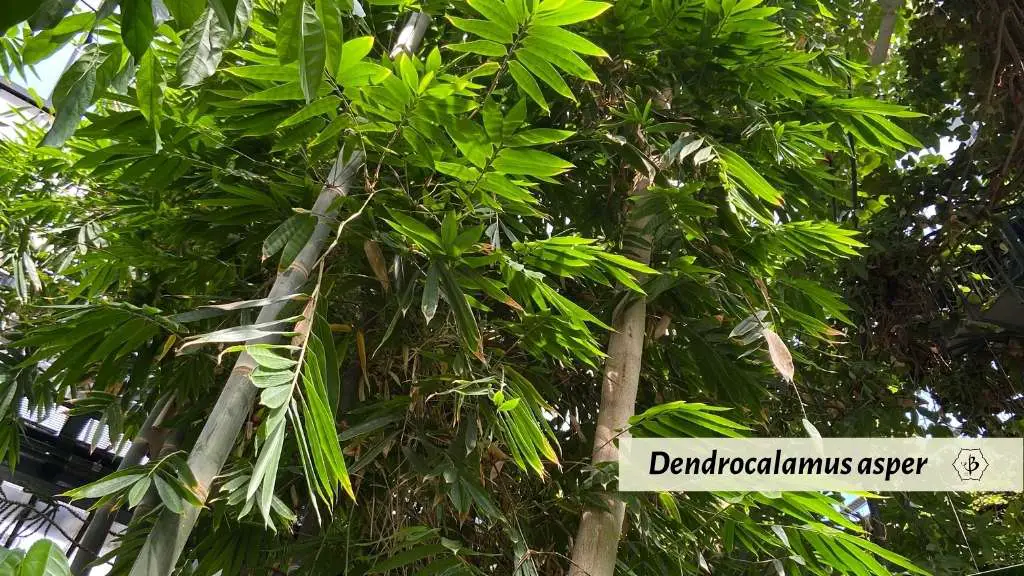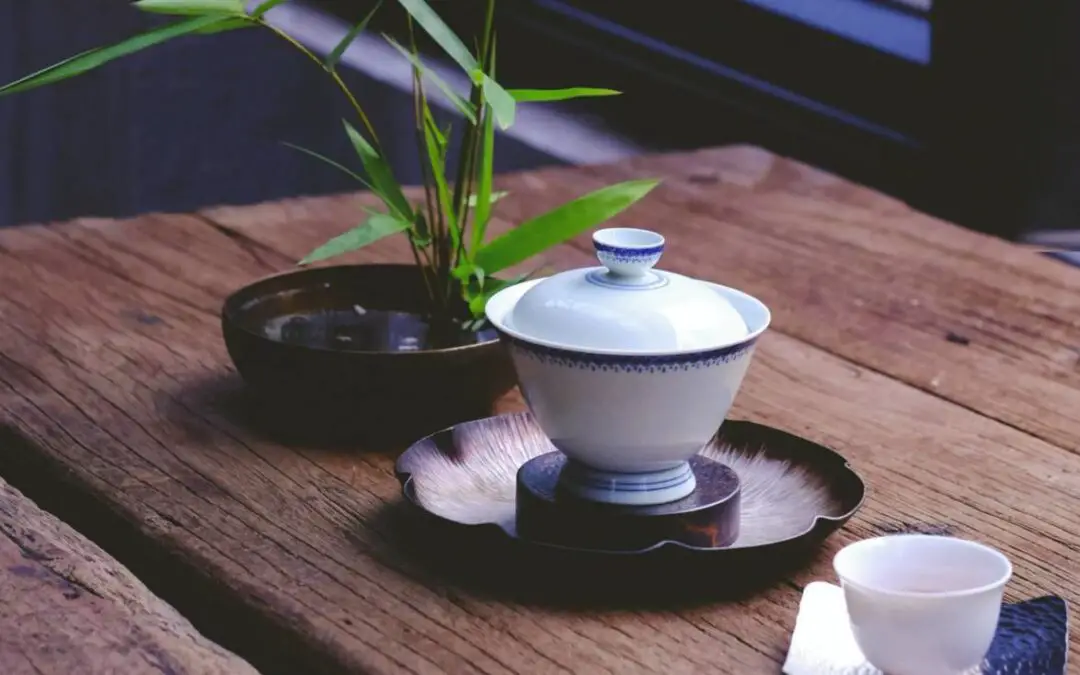The uses for bamboo seem to go on forever. From bamboo socks for your feet to bamboo hair brushes for your head, bamboo can do it all. You can even build houses with bamboo and provide them with energy from bamboo. For thousands of years, farmers have understood the practical and nutritional benefits of eating fresh bamboo shoots. So doesn’t it also make sense to brew hot tea from bamboo leaves?
Yes, you can brew tea from fresh or dried bamboo leaves, and the tradition dates back many centuries. As the fastest growing plant on earth, and a grass, bamboo leaves are readily available and easy to harvest. Not only that but there are also a wide range of health benefits associated with drinking bamboo leaf tea. Like most kinds of tea, the process of brewing bamboo leaves is incredibly easy. And with close to 2,000 varieties of bamboo to choose from, there are definitely some species of bamboo that will produce better-tasting tea than others.
In the following article, we’ll identify some of the best kinds of bamboo for making tea, discuss the health benefits, and explain how to prepare it.
NOTE: This article first appeared in August 2020, last updated in October 2022.
Why drink bamboo leaf tea?
You can prepare bamboo leaf tea from a great number of different types of bamboo. The tea is caffeine-free, the aroma is very pleasant, and the taste is mild and refreshing.

If you’re capable of growing your own bamboo, or walking into the forest to find some growing, then you can make your own tea. And this should not be difficult, because bamboo is the fastest growing plant known to mankind.
Unlike bamboo shoots, which are also delicious and nutritious, bamboo leaves are available all year long, so the tea can be enjoyed at any time. And the leaves don’t require any special preparation the way the shoots do. Just soak them in hot or cold water, and drink up!
Health benefits of bamboo tea
In addition to being an extremely easy way to obtain a refreshing beverage, bamboo leaves also have a variety of health benefits. The bamboo leaf contains about 70% organic silica (sometimes known as silicon), which provides some great benefits:
- Silica promotes healthy hair and nail growth. Hair is made up of 40% silica, and bamboo provides other essential vitamins as well.
- Silica is a building block of collagen, a vital structural protein that our body uses to rejuvenate connective tissues like skin and joints. For this reason, bamboo tea can provide real relief from symptoms of arthritis.
- Silica also prevents the absorption of aluminum in the digestive system. Aluminum has been linked to an increased risk of Alzheimer’s disease and other serious health conditions.
Dangers of bamboo consumption
Are there any risks to consider when eating or drinking bamboo?
Drinking bamboo tea is perfectly safe, but eating bamboo leaves is NOT recommended. Also, when eating bamboo shoots, most varieties should be boiled or fermented first in order to remove certain toxins.
There is nothing dangerous or harmful in the tea extracted from bamboo leaves. Bamboo shoots do contain a type of cyanogenic glycosides called taxiphyllin. And ingestion of cyanogenic glycosides can result in cyanide poisoning. However, boiling, fermenting or pickling bamboo shoots is sufficient to eliminate these potentially harmful compounds.
How to prepare bamboo leaf tea
Preparing bamboo leaf tea is almost as easy as 1, 2, 3. The hardest part is probably waiting for the water to boil! Here’s what you need to do, in 6 simple steps.

- Harvest some fresh bamboo leaves. It’s best to collect them green off the plant. Do not gather the fallen leaves from the ground. For a higher concentration of flavor and nutrients, you should also harvest in the drier season. Leaves harvested in the rainy season tend to be more watered down.
- Prepare the leaves fresh or allow the leaves to dry in a cool, dry, dark place, for about 5-7 days. Spreading them out on a drying rack is best, but in a paper bag works, too.
- Crush or grind some dry leaves and place them in a reusable tea bag or stainless steel “tea egg”. If you don’t have these implements, you can also add the crushed leaves directly to the water and remove them later with a sieve or a strainer. Store the remaining leaves in a jar to preserve freshness.
- Boil a pot of clean, purified drinking water.
- Pour the hot water over the tea bag (or tea egg) and allow the bamboo leaves to steep for 5 to 7 minutes.
- Add lemon or sweetener to taste, and enjoy!
Cold infusion bamboo leaf tea
An alternative method to preparing hot bamboo leaf tea with boiling water is to infuse the leaves in cold water. The silica is not liable to degenerate in boiling water, but some people feel that the cold water is more gentle on the leaves.
Follow the same steps as above, but instead of using boiling water, soak the leaves in cold water. This process works more slowly, so you’ll want to let them soak for several hours, or overnight. You can keep a pitcher of cold bamboo leaf tea in the fridge, and it generally stays good for up to 5 or 6 days.
I’m told that the cold infusion produces a smoother-tasting beverage. It’s unclear, however, whether the cold process is equally effective in extracting the beneficial silica.
The best bamboo varieties for tea
According to experts who grow, harvest and prepare their own leaves for brewing tea, these are some of the best-tasting choices of bamboo species. But feel free to experiment. There are hundreds of options to choose from, and bamboo leaves are perfectly safe for consumption, even if you’re not able to identify the species.
They can be a surprising variation in the flavors of different bamboo species. Some are strong, some are mild, some are more earthy, and so on. As far as health benefits, there may be a slight variation in the silica content of different species, but there’s not a ton of research and data on this topic. In the end, there is so much silica in bamboo, that any species can provide a great source of this mineral.
- Bambusa blumeana: Thorny Bamboo, as it is commonly known, is very useful for building, for producing edible shoots, and for making tea. This tropical species does not grow well in the US, but it is especially popular in Vietnam and Southeast Asia, where they call it Tre Gai.
- Bambusa oldhamii: Also called Chinese timber bamboo, this is one of the most widely grown species of bamboo in the United States. Tea from these leaves is known to be very light but quite tasty and refreshing.. Although it’s native to more tropical and sub-tropical climates, it actually grows very well in temperate climates, too. Under ideal conditions, this timber bamboo can grow 60 or 70 feet tall with smooth, waxy culms up to 4 inches in diameter. In cooler climates, it won’t get quite as big, but it will still make an impressive addition to the garden. It’s cold hardy down to about 20º F. It’s also nice to know that Oldhamii is a clumping variety of bamboo, so you won’t need to worry about the tenacious roots taking over your yard. Check out our in-depth article on B. oldhamii to learn more.

- Bambusa malingensis: Also known as Seabreeze, this is another clumping bamboo of Chinese, sub-tropical origin. As the name suggests, this is a great species to grow in coastal areas like Florida, Texas and California. But it also grows well elsewhere, so long as it stays above 20º F. Although it’s clumper, it grows quickly and makes a good privacy screen. Tightly clumping, dark green culms grow about 40 feet tall and about 2-2.5 inches in diameter.
- Bambusa textilis gracilis: Commonly known as Graceful bamboo, this is another one of the most popular species of bamboo, especially for privacy screens. It’s also one of the best-tasting varieties for tea. As for the plant, the culms grow tall, upright and elegant, as the name would imply, producing a wonderful canopy of foliage. Again, like all members of the genus Bambusa, this is a tropical, clumping species. It prefers warmer climates but can handle winter temperatures down to about 20º F. Under ideal conditions, it can get about 30 tall, with poles just over an inch in diameter.
- Bambusa ventricosa: This subtropical bamboo is also a popular ornamental in warmer climates. The culms have an unusual shape that have earned it the nickname “Buddha Belly Bamboo.” Leaves from this species produce a darker, stronger tea, in sharp contrast to Graceful bamboo, above.
- Dendrocalamus asper: This giant tropical bamboo is a superior species in so many ways. It won’t grow well in the US, except maybe in southern Florida, but in the right climate, it can get enormous. It also has huge leaves that make the most delicious tea.
- Phyllostachys: This very common bamboo genus contains dozens of species and many popular ornamentals. They all make good tea, and generally have more of an earthy flavor. (See below.)
- Pseudosasa japonica: This medium-sized bamboo species is very popular as an ornamental variety. Straight, upright culms grow up to 10 or 15 feet tall, and about an inch in diameter. The plant grows well in the shade and is quite cold-tolerant. The leaves produce a tea that is very light and yellowish in color.
The best bamboo varieties for edible shoots
When it comes to eating bamboo shoots, some species are definitely better than others. Although most bamboo varieties have good, edible shoots, many do not. That’s because some species have more cyanic glycosides, making them much more bitter in flavor. But contrary to popular belief, there’s not necessarily a correlation between the quality of the shoots and the quality of the leaves for tea.

- Dendrocalamus asper: This amazing species has some of the largest and strongest culms, making it one of the most tropical bamboo species for commercial farming in the tropical regions from Southeast Asia to sub-Saharan Africa to Latin America. It also has some of the best-tasting and most nutritious shoots of any bamboo. Finally, bamboo tea connoisseurs consider Asper to be one of the tastiest varieties of any bamboo.
- Phyllostachys edulis: Also called Moso Bamboo, this giant timber variety is indigenous to China and Taiwan, and is also the most widely used for bamboo textiles. Mature stalks can grow nearly 100 feet tall and get to be several inches in diameter. Fresh shoots from a well-established grove can weigh more than 5 pounds; that’s quite a meal. Depending what time of year it’s harvested, it may be dried or eaten fresh.
- Phyllostachys bambusoides: A large timber bamboo from Japan, whose shoots are eaten either fresh or dried. Japanese timber bamboo, or Madake, as it’s sometimes called, can grow more than 50 feet tall in ideal conditions, with culms up to 5 inches thick. It can tolerate temperatures as low as -5º F, but in colder climates it won’t grow as big.
- Phyllostachys dulcis: “Sweetshoot Bamboo” is prized (and named) for its great-tasting shoots. Dulcis literally means sweet. The plants are attractive as well, with fast-growing, upright culms that get 20 to 30 feet tall. Generous foliage adds to its pleasing appearance.
- Phyllostachys aureosulcata: Widely grown as an ornamental, this species, known as Yellow groove bamboo, has a distinctive yellow stripe that runs along the culm grooves. Poles can grow up to 30-40 feet tall and 1.5-2 inches in diameter. The fresh shoots are quite tasty, without the bitter flavor, and can even be eaten raw. Like all members of the genus Phyllostachys, this is a runner, and a particularly vigorous one, so be careful where you plant it, and be aware of the best containment strategies.
- Phyllostachys nigra ‘Henon’: Giant gray is an unusually interesting cultivar of black bamboo that grows considerably larger than the regular P. nigra species. Shoots emerge dark green and slowly turn a dusty gray color, uniquely attractive. Mature poles can get 60 feet tall and 4-5 inches in diameter, producing some generously sized and deliciously tasty shoots.
- Phyllostachys nuda: An especially cold hardy and fast-growing species with deep green culms and lush foliage, making it a great source of leaves. Canes grow 30-40 feet tall and 1.5-2 inches in diameter. Cold hardy down to -10º F.
Further reading
If you enjoyed this article about bamboo leaf tea, please consider sharing the blog post or subscribing to our mailing list. You might also be interested in some of the following links:
- Bamboo legends and mythology
- Bamboo for bonsai
- The right touch: Bamboo massage
- Growing bamboo indoors
- Bamboo and carbon sequestration
- Best bamboo for construction
PHOTO CREDIT: Fresh bamboo and tea service (Unsplash)


























When you say the leaves, can I use the stems the leaves are attached to or are they toxic also?
Great question. Try to avoid the stems as much as possible. At the same time, the levels of toxicity are so low, I think you would have to ingest a tremendous quantity of “bamboo stem tea” to feel any adverse effects.